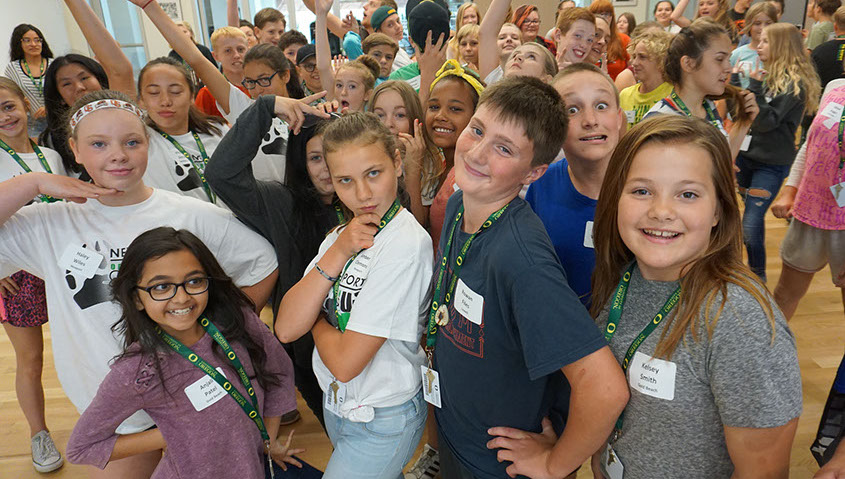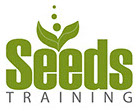


PLAYER
Better grades by working smarter.
The following is an excerpt from our book, "Gearing Up". The book is a collection of chapters from top trainers and speakers around the world...and it's specifically designed to help young people find success in school and in life.
The PLAYER method can be used in the classroom. It requires minimal effort and when practiced, can achieve phenomenal results that trigger a cataclysmic change in your attitude towards “Class Time”. It can also be used to improve your grades without requiring any additional homework, study time or trips to the library. PLAYER is also an acronym. Each letter of the word stands for a part of the method. That should make it easier to remember.
Let’s break it down piece by piece.
P – stands for posture.
Your mom has probably told you to “sit up” a thousand times and you are probably sick of being told to do it. But, there are two really good reasons to have good posture in the classroom:
Your brain and body are connected. Your brain is stimulated by electrical impulses that travel throughout your body carrying information gathered by your senses. Most of that information travels down the original “information superhighway”…your spinal cord. All along your spine, critical nerve pathways move information to and from your brain stem in your neck. So, just like stepping on a garden hose, when your spine is curved, bent or slouched, you are cutting off the movement of electricity to your brain. That’s not good. Your brain then starts to conserve energy by falling asleep. That’s not good in the classroom. It’s hard to learn anything if you’re asleep. So sit up nice and straight.
People form opinions about people based on how they look. Now, besides what you’re wearing, your hair style, and your new shoes, your posture sends very strong messages to other people. What do you think a teacher is thinking about you if they notice that you are slouching in your chair?
They may be thinking things like, lazy, bored, uninterested or poor student. You may not be those things but that’s what they are thinking and that’s what they will associate with your face and name.
What do you think a teacher is thinking when they notice a student that is sitting up, with good posture?
They will probably be thinking things like, prepared, good listener, attentive and conscientious student.
Now that’s a good impression to give.
Having good posture takes little or no effort and will get you noticed in the classroom. The goal is to be remembered for the good things that you do.
L – stands for lean forward.
This is easy to do and has some real benefits. When you lean forward, it reduces the amount of pressure on your lower back and helps the flow of electricity and info to the brain. Also, when you lean forward, it gives the impression that you are interested in what is being said. A teacher will look around the classroom and notice, consciously or subconsciously, that you are leaning forward. Again, this is a good impression to leave.
A – stands for Ask Questions.
I cannot emphasize the importance of this one enough. Learning is not a spectator sport. You have to participate in the process. Here are four reasons to put up your hand and ask a question in class:
1. When I ask students why they don’t participate in class, 9 out of 10 of them say that they don’t ask questions or give answers because they are afraid of saying something stupid and being laughed at. My response to that is, “As soon as you worry about looking stupid, you will become stupid.” If you stop participating, the brain will disengage and learning will taper off.
2. If you’re thinking it, so is someone else. Many times, there are several students with the same question but only one with the guts to ask it. When you ask a question, you are probably helping a bunch of other people in the process. That’s part of being a good PLAYER and a LEARNING PIONEER.
3. Asking a question will cause the teacher to repeat critical information. Repetition is an essential part of the learning process and the more times, and the more ways that a teacher can put forth the information, the more likely it is to stick.
4. Asking questions can actually make your teacher better. Teachers have more responsibilities than ever. An increased pressure to deliver standardized curriculum means that teachers are always learning new content that may or may not be their expertise. They are doing the best they can and your questions can give them feedback. They will know which parts they are not delivering in a way that is easily understandable. This improves their ability to teach you and benefits all their students.
Asking questions is easy to do and will get you noticed for a positive behavior. If you are not comfortable or are not allowed to ask questions during class, make a note of them and then approach your teacher after class to get them answered.
Y – stands for what I call “YES Head”.
It’s real simple to do and can be super effective. Let’s do a quick experiment.
Think of the word “NO” and make the head movement that goes along with that word.
Great. Now, think of the word “YES” and make the head movement that goes along with that word.
Your head can be used as a tool for communicating with your teacher. All you need to do is gently nod your head “YES” as the teacher speaks. You don’t need to say anything, just nod your head positively.
Here’s what this will do for you and why it works. When you nod your head, the teacher translates that motion as a “YES”. YES is a positive word and they will be thinking that you are in agreement with them. This is feedback for them and they will appreciate your positivity, even on a subconscious level.
The reason this works is that human beings are designed as predators. Our eyes are on the front of our heads and we seek things out with them. We are attracted to motion and will be drawn to whatever moves. That’s why teachers are always distracted by the one kid throwing spitballs or playing around with something at the back of the room. Nodding your head will attract the teacher and get you noticed for another positive behavior.
E- stands for expression.
The look on your face speaks volumes about you. It’s a simple fact of life. When people have a frown on their face, we assume that they are angry and we interact with them under that assumption. When a teacher looks around a classroom and sees a bunch of sleepy, uninterested, frowning or angry people, they will interact with you based on what they are seeing. So, use your face to get noticed in a positive way. Smile, raise an eyebrow, smirk or mouth the word “WOW” once in a while. You will stand out and get noticed for yet another positive behavior.
Combine those parts, Posture, Lean Forward, Ask Questions, YES Head and Expression and you already have an easy to use, effective system for improving the effectiveness of your “Class Time”. But, there’s still one more part to the PLAYER method and it’s the purpose for doing all the other parts.
R – stands for relationship.
Here’s the biggest secret that I can let you in on. TEACHERS ARE HUMAN BEINGS. That’s right. I know it’s shocking.
When I was seven I really believed that teachers stayed at the school. I thought that the custodian came by each classroom each night and tucked the teacher away into the closet and the fired them back up again each morning. It never occurred to me that they had lives outside of school.
So the final part of PLAYER is to develop a relationship with your teachers. They are wonderful people who are there to be a resource for you. They are some of the most interesting and good people on the planet. Get to know them. Before class starts, ask them questions about their favorite foods, movies, music, sports, TV shows or anything else. They’ll appreciate being treated like human beings.
That’s the whole PLAYER method. It’s all so easy and I guarantee that you’ll find it to be effective. The whole point is to increase your participation in the learning process by making the classroom comfortable again. This method will keep your brain awake, get you noticed for positive behaviors and help you to build a great relationship with your teachers. That’s’ a winning formula for the game of school and the secret code to unlocking your academic potential.
The most successful people do the simplest things with consistency.
Copyright Seeds Training
